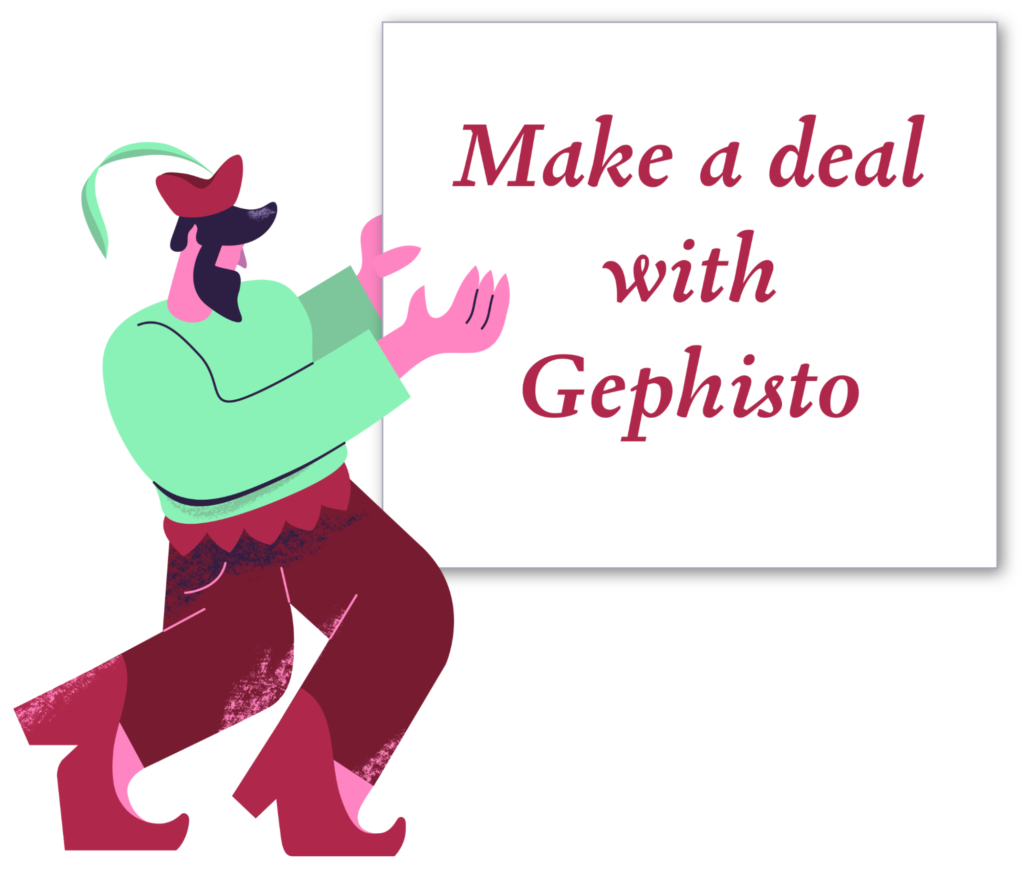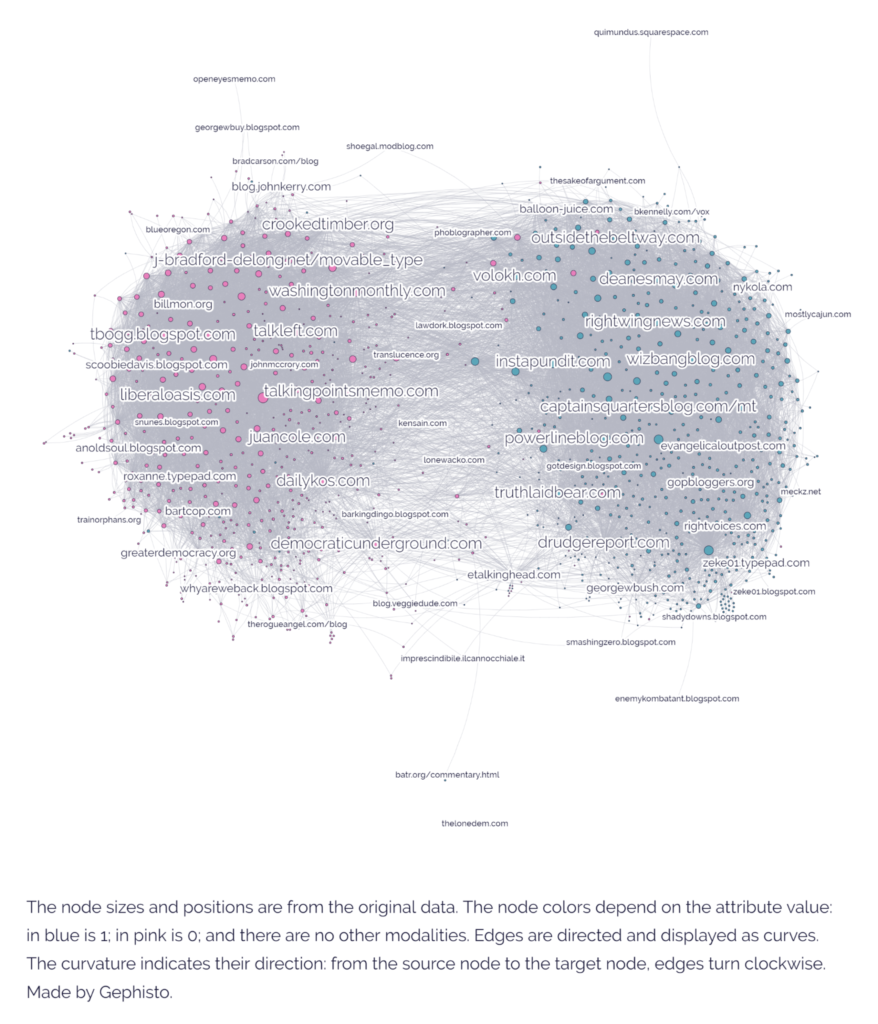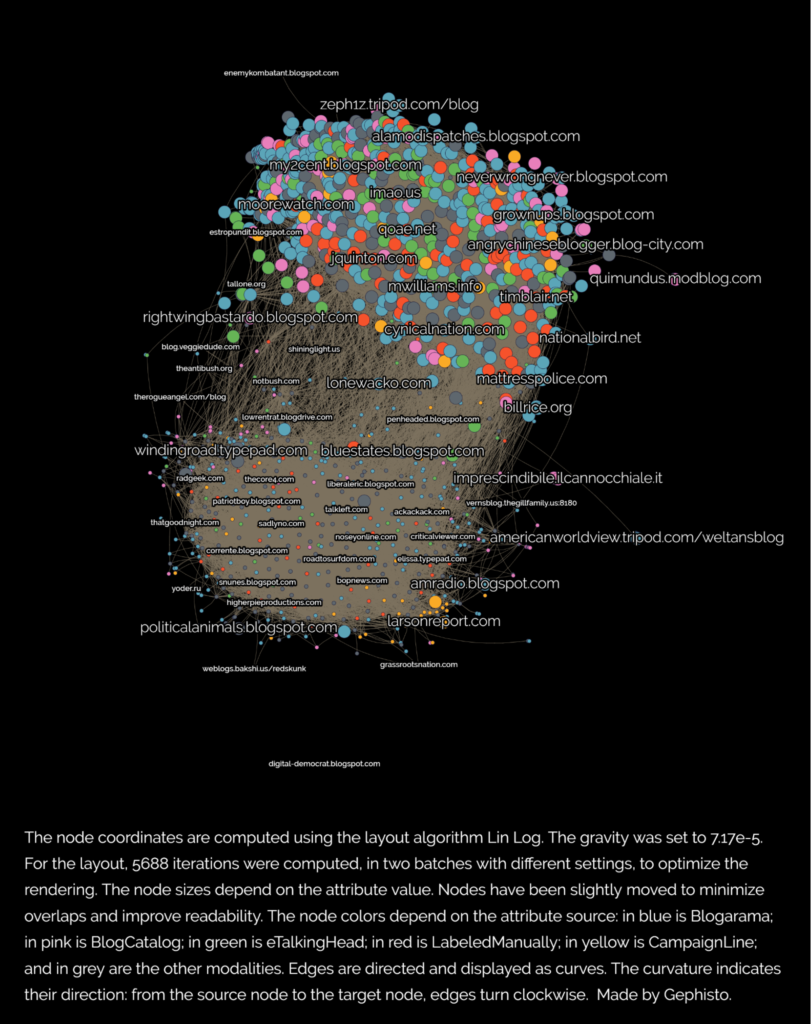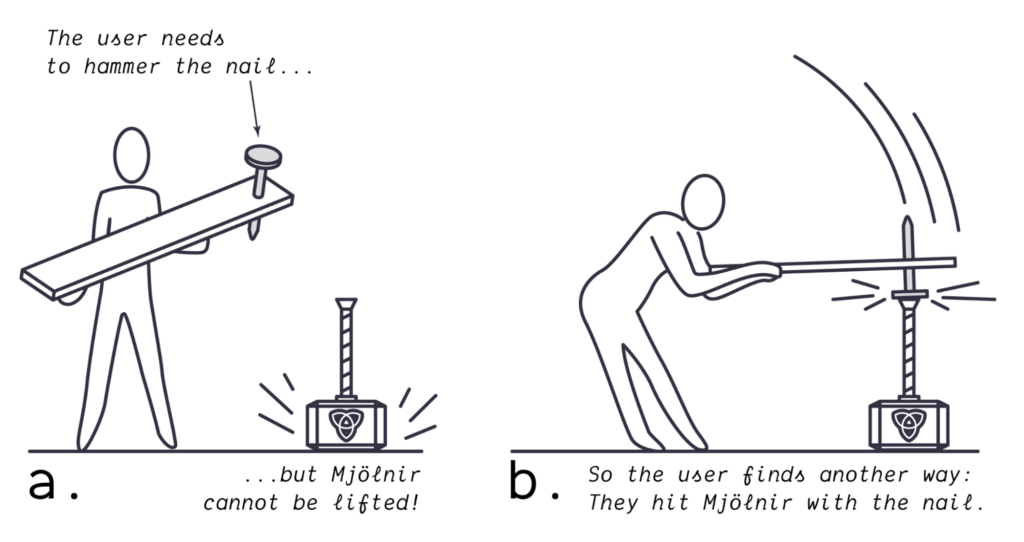Mathieu Jacomy and Anders Munk, TANT Lab & Public Data Lab
6 minutes read

Gephisto is Gephi in one click. You give it network data, and it gives you a visualization. No settings. No skills needed. The dream! With a twist.

Gephisto produces visualizations such as the one above. It exists as a website, and you can just try it below. It includes test networks, you don’t even need one. Do it! Try it, and come back here. Then we talk about it.
https://jacomyma.github.io/gephisto/
Now that you have tried Gephisto…
Have you noticed that Gephisto does not grant you the same result every time? Sometimes it fails. Here is an example.

It failed because it had to guess how to interpret a given variable in the data. In this case, there is a column named “value” in the table of nodes, that is set either to 0 or 1. Integer values are ambiguous: are they categories or measures? Here Gephisto guessed (wrong) that it is a measure, and it put the nodes with 0 in small and the nodes with 1 in big. It would be a better choice to map the values as colors, as in the first map of this post.
Gephisto makes good faith mistakes
Gephisto tries to make all the decisions necessary to visualize a network the best it can. It never makes an obviously nonsensical decision, like displaying labels that are too small to be readable, placing nodes at random, or using the wrong visual variable for an attribute, for instance representing node types as different sizes.
However, even if you remove the objectively bad options, too many decisions remain. Those are decisions that are equivalently valid, or that could be good depending on the context. For instance, the background color. If you want to print, you may prefer a white background (it uses less ink). But if you have slides a black background is a good choice. Other example: when you have multiple attributes that could be represented as node colors, which one should be used? If any! There are many similar choices that cannot be decided once and for all.
Gephisto makes weighted decisions. For instance, displaying clusters is slow and not always helpful, so it does it with a 33% chance. On the contrary, using different node sizes is generally desirable, as it provides a sense of hierarchy, so it does it with a 85% chance.
Gephisto also takes its own choices into account to make more decisions. For instance, if you pass it a network that already has node colors, and if it chooses to use these node colors, it will then not display clusters, because the color codes will conflict.
Every time you run Gephisto, it makes a different visualization. If you do not like it, you are encouraged to retry.

Serious trolling
Gephisto is a serious joke. A design experiment. As a tool, it is aimed at people who desire a one-button black box for network visualization. And as an experiment, it is aimed at academics reflecting on tools and critical thinking. It trolls its users in a specific, unusual way.
We dressed Gephisto in the style of Corporate Memphis because we are aware that it endorses the latent promise that technology can, by itself, make the world a better place. Gephisto delivers the maximal simplification, the ultimate ease of use: the one-click solution. We do not ignore that many users desire such a thing.
However genuine this desire, we suspect that it exists only when you ignore its obvious drawback: the loss of agency. As you immediately experience when you use Gephisto, it can be really handy to settle certain decisions. You now realize that you want a white background, that some attribute is the one that is really interesting to map as node colors, that you do not need to visualize the edges, and so on. Now that you see what it may look like, you want agency. But this conflicts with the premise of the whole thing: a one-click solution. If you wanted agency, you should have used a tool like Gephi.
Gephisto is trolling you by frustration; but that frustration is just the consequence of your own desire for an easy-to-use black box. Gephisto taught you a lesson by giving you what you asked for, and it made you question what you truly wanted. It trolled you like the proverbial devil or bad genie. Hence the pun: Gephi + Mephisto = Gephisto. Well, Goethe’s Mephistopheles is a bit different, but it made a better pun.
This exercise in productive trolling also aims at challenging a commonplace idea in tool criticism. Blackboxing is often associated with ease of use and lazy thinking, and opposed to reflectiveness and critical thinking. This idea entails that easy-to-use tools are harmful because they make you uncritical. But if tools are hard to use, how do beginners even learn how to use them well? This is not how tool literacy works.
The Mjölnir paradox
This line of thought leads to a weird understanding of tools, where those are good for critical thinking when they can only be used by educated, critical users. Such tools are like Thor’s hammer Mjölnir, they can only be used by the worthy. But people come to a tool because they have needs, worthy or not. Making it harder to use a tool will not deter those deemed unworthy. It will only lead to worse misuses, because people will always find a way to meet their needs. That is what we call the Mjölnir paradox. Any opposition to the user’s needs will be met by an equal amount of repurposing. We develop that idea in a paper, currently under peer review.

Gephisto experiments with the opposite strategy. It tries to elicit reflexiveness and critical thinking while remaining easy to use. It does not oppose the user’s desire for simplification, but instead pushes that simplification to the point it becomes uncomfortable. And hopefully, fruitful for critical thinking.
How does it go?
There are not many users of Gephisto at the moment. We hope this blog post helps!
Some people just use the tool…
… some people use it as a teaching device, which (we think) is where it could shine…
…and some people want it more operational.
Some users have provided useful feedback which we incorporated to the tool, notably by putting the legend within the image itself, and by allowing to open .GraphML files.
Gephisto has been used by almost a thousand different users since its release in October 2021.